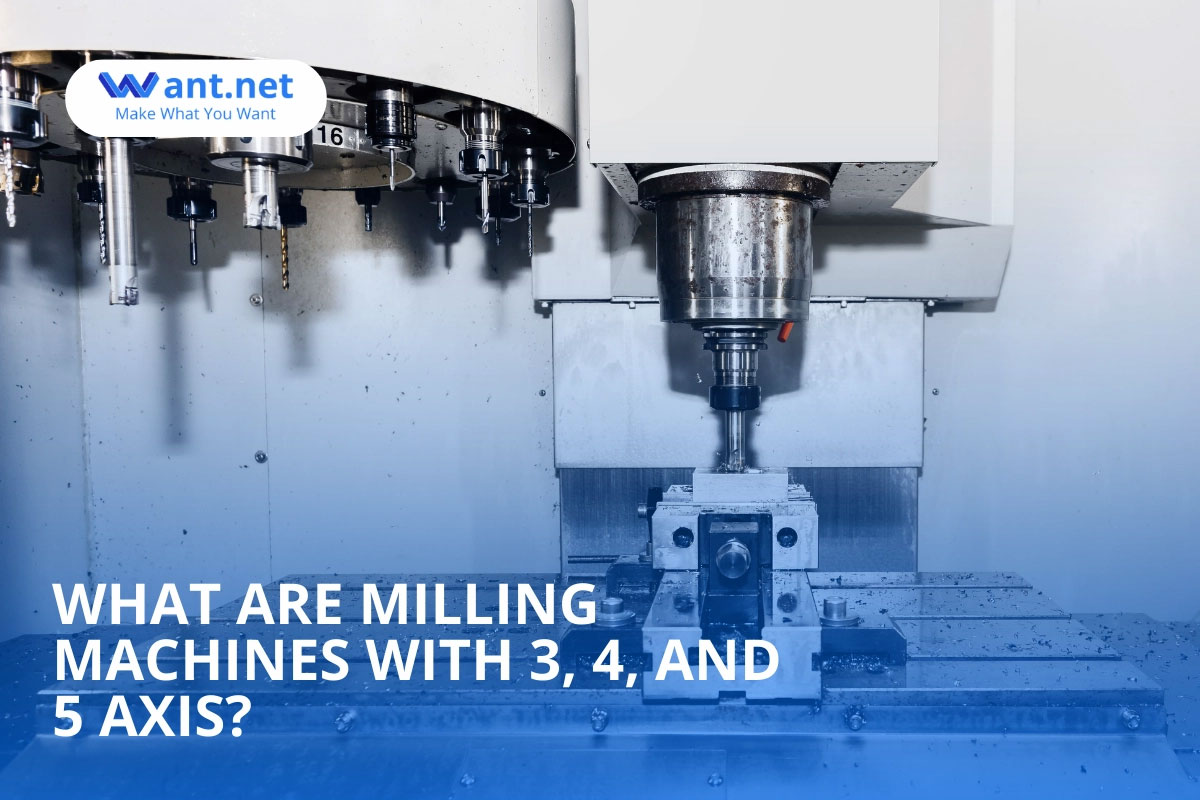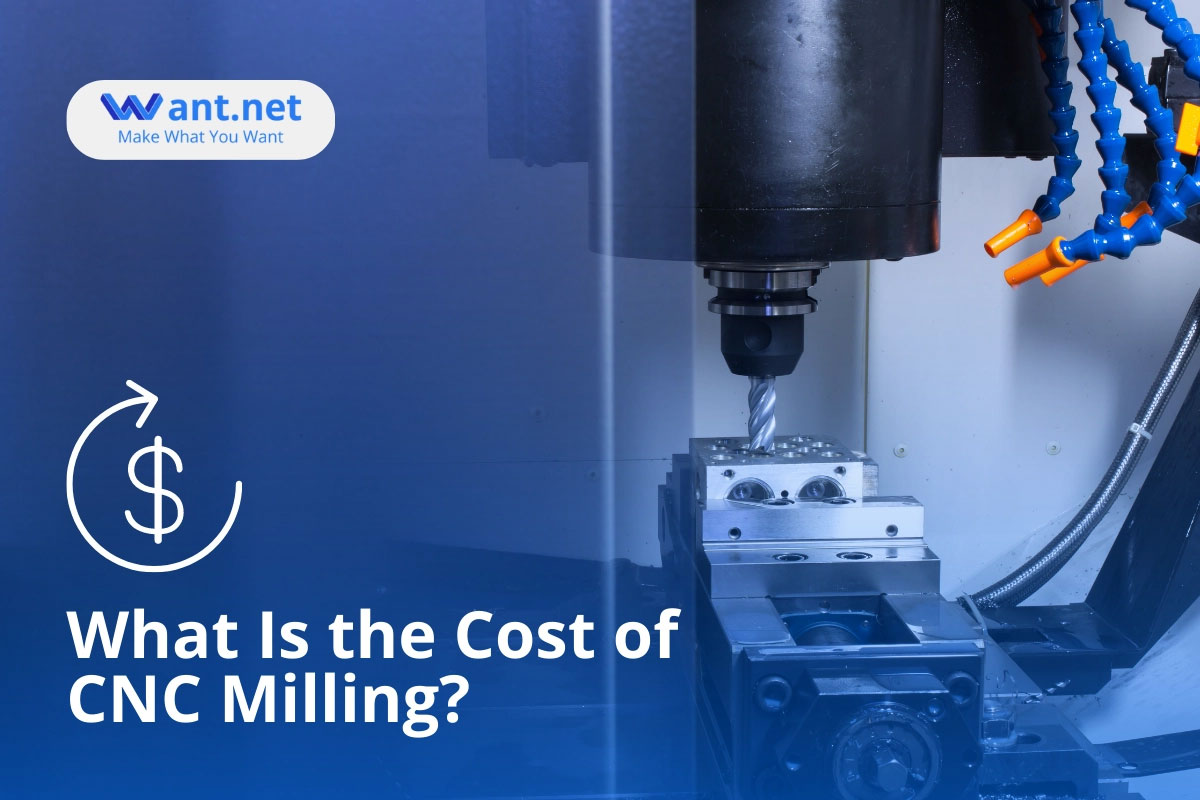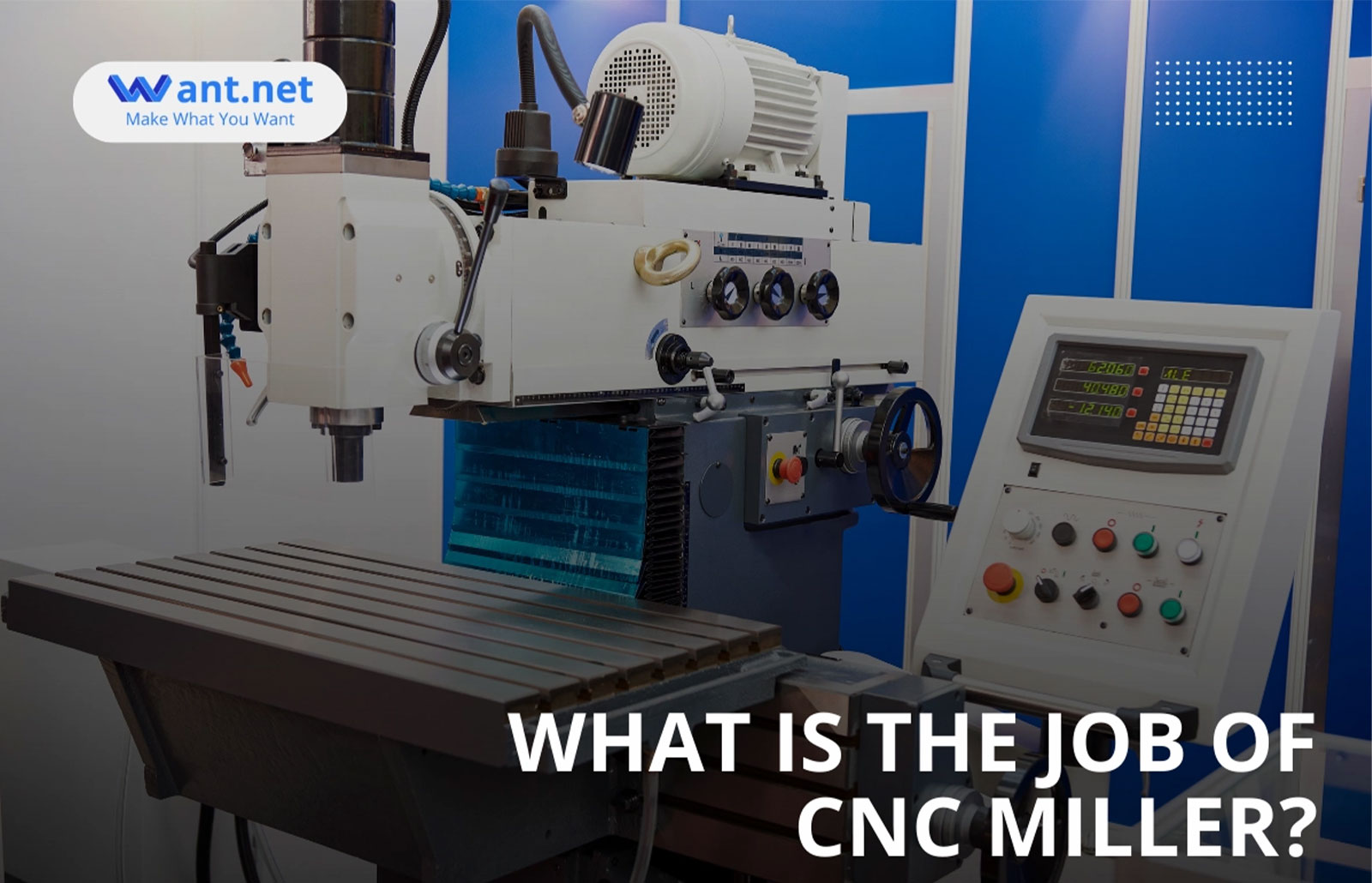The early milling machines were developed on the rotary filing method. Rotary filing is a technique that developed in various production lines all over the world. It involves mounting a circular cutter with teeth in the headstock of a lathe, which saves time and effort compared to hand-filing.
The first milling machine-specific tools originally appeared in American craft workshops some 200 years ago. Since then, milling has grown so sophisticated that it can be controlled by a computer.
Keep reading for a comprehensive review of all the different types of CNC milling, the structure of a CNC machine, and the CNC milling process.
What Is CNC Miller?
CNC Miller increases the efficiency and performance of products from spacecraft to racing cars to video game consoles, by combining cutting-edge design with computer science and technical expertise.
What is CNC Milling?
CNC Milling is a subcategory of CNC Machining milling; in order to learn more about CNC milling machines, read our comprehensive tutorial. A custom-designed item or product with a high level of finish precision is produced using computerized controls. It is popular in many sectors because of its accuracy, consistency, capacity to boost productivity, and ability to create consistency.
A CAD drawing (computer-aided design) is required to manage the outputs of the CNC milling machine at the beginning of the milling operation.
What Is CNC Milling Machine?
A milling machine produces excellent products with a high level of precision and polish. In order to create the part design, CNC milling machines employ rotary tools and instructions from a CAD file to cut away the material.
CNC milling machines are designed to make numerous components in large quantities from a variety of materials and plastics.
What Are Milling Machines With 3, 4, and 5 Axis?

Let’s explore the different milling machine categories:
3-axis milling machines allow the cutting tool to move and remove pieces along the X, Y, and Z axes. The most common machining technique uses this kind of low-cost startup. It is also used for the making of simple pieces with simple geometry.
A 4-axis milling machine includes all the features of a 3-axis milling machine plus a fourth axis. Moreover, it enables the workpiece to be rotated around the A-axis for cutting. This is very helpful if you need to cut pieces together around a cylinder or the outside of a piece.
The 5-axis milling machine enables motion along the three linear axes, rotation of the machine head, and rotation of the tool head—totaling five axes.
It can therefore produce items with complex geometries, including aircraft items, titanium pieces, medicinal items, and gas machine parts. It can rotate in various dimensions, which removes the need for different setups and enables single-step cutting, which is quicker and more efficient.
How Does CNC Milling Work?
CNC milling is a four-step process:
Create a CAD model.
A CAD model of a particular component is made by machinists using a design program like Autodesk Fusion 360.
Convert CAD model for CNC machine
Start the CAM (computer-aided manufacturing) operations after importing the CAD model. If everything goes according to plan, you’ll have a set of digital commands, or G-code, that instruct the CNC machine what and how to perform. Machines can use G-code commands to tell them where to proceed and how quickly to create a specific component.
Setup of the CNC milling machine
Mount the workpiece or material block to the machine bed and ensure accurate alignment with measuring equipment or touch probes. Complete all of the milling machine setup procedures, including installing the machine spindle.
Start the milling procedure.
Start the CNC milling operation by loading the program. Until the workpiece precisely replicates the required component, the special cutting tools move at high speed or at a fixed rotation per minute.
What are a Common CNC Milling Machine’s Axes of Motion?
A CNC milling machine’s axis of motion is built on an XYZ coordinate monitoring system. When discussing the fundamental mill movements with respect to an operator facing the machine, all machinists refer to this. Three axes are common for a CNC mill. The Z-axis is represented by the milling spindle, which moves up and down. The Y-axis runs from front to rear, while the X-axis runs from left to right.
In comparison to 5-axis machines, which generally have rotating work tables installed in, CNC milling machines can add rotary tables to enable additional movements.
What Are Milling Machine Features?
Typically, a milling machine may be divided into seven separate components that make up its key features. These characteristics consist of:
Knee: The knee is movable but fixed to the column. It supports the worktable and the saddle. On the Z-axis, it can be lowered or lifted.
Column: The column serves as the machine’s primary support structure. It helps to support the main machine parts.
The saddle: The saddle, which may be shifted parallel to the axis of the spindle, is situated above the knee and below the worktable. If necessary, it shifts the workpiece horizontally.
The worktable: The worktable is where the workpiece is secured, and it is situated on top of the saddle. Depending on the model, the worktable of the milling machine can be moved vertically or horizontally.
Spindle: This rotating part, which is powered by an electric motor, supports both the machine tool and the arbor.
Arbor: Horizontal milling machines use arbors. It functions as a shaft that may be used to mount various machine tools when it is placed into the spindle.
Ram: Usually present in vertical milling machines, the ram is attached to the top of the column that supports the spindle.
Machine tool: The component that carries out the milling operation is known as a machine tool. It extracts materials from the workpiece while being supported by the spindle. Machine tools come in a variety of types.
What Are the Advantages of CNC Milling Using Computer Numeric Control?
Computer Numeric Control, a computer program created from a 3D digital file of the required final item, is the basis for all of these CNC mill motions.
Punch cards were used by early computerized machine tools to systematically manage their fundamental movements. Although this technology was functional, it was a slow and laborious technique, and punch cards could not be altered once they were created. Later, magnetic cassettes, disk drives, and now completely digital G-Code instructions took their place.
This control technology is not only quick and precise, but unlike prior systems, it also makes it simple to make changes to the machining program line-by-line and in real-time for the best CNC milling results.
What Is the Cost of CNC Milling?

The price of CNC milling depends on a number of variables. The costs involved with CNC milling are mostly determined by how long it takes to produce each item. Large or difficult-to-remove volumes of the material may require longer grinding durations.
Certain parts could need more advanced tools or cutting techniques depending on the item’s design. The material and part intricacy are other variables that affect how much CNC milling costs.
What Is a CNC Milling Machine Used For?
High levels of precision and accuracy are fundamental to the process of CNC machining, which leaves very little opportunity for error. This is due to the fact that it uses a computer-driven program and inputs 3D designs created using CAD. An interface for the machine is used to start all operations.
These commands are carried out by the machine without any input from the user. The highest level of precision is made possible by these automated procedures, ensuring that even the most complicated and finite geometry can be properly handled.
Summary
There are many types of CNC milling machines for all sizes and commercial requirements, making them highly adaptable. Computer numerical control is the most dependable option for machinery when accuracy is important to a product’s operation, despite its greater initial cost.
Related Posts
- Applications and Advantages of Bronze CNC Machining
1. Introduction: The Enduring Allure of Bronze in CNC Machining In this opening section, we explore the timeless appeal of bronze as a material for CNC machining. From its rich…
- Brief History of CNC Machines: Update 2023
CNC technology has improved over the past few decades from punch tape-controlled machines to tools that take CNC programming and create 3D machine parts with outstanding accuracy. John Parsons is…
- Enhancing Optical Components with CNC Machining: Glass vs. Polycarbonate
Introduction to CNC Machining CNC (Computer Numerical Control) machining stands as a pivotal technology in the manufacturing of optical components, enabling the precise shaping of materials with minimal human intervention.…








